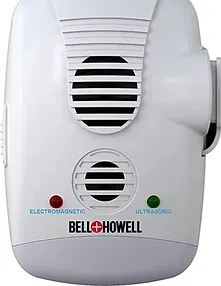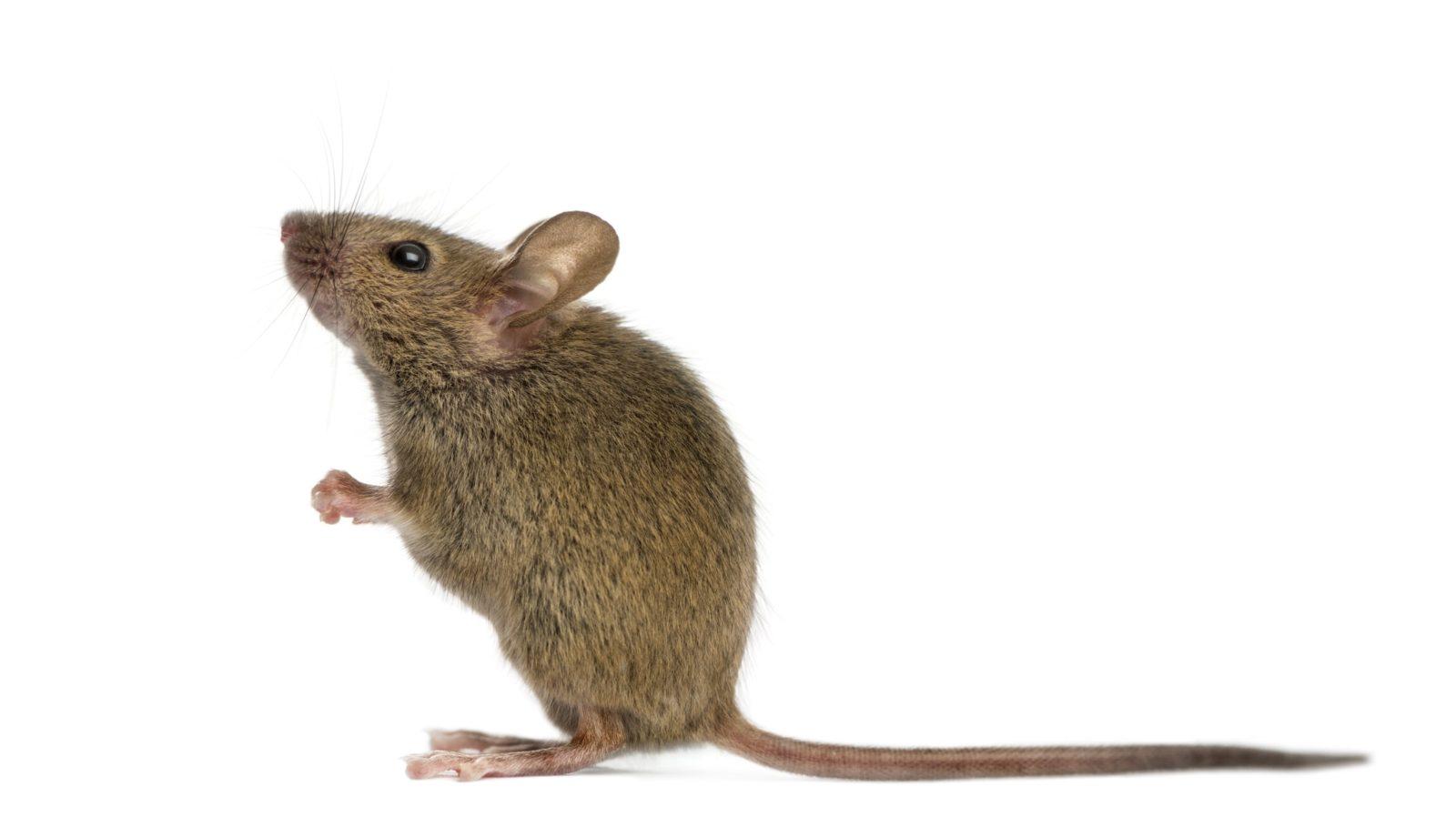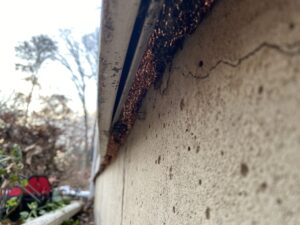
As the fall finally rolls into winter here in Northern Illinois, learn about what key mice mitigation methods do and do not work
Building homes accomplishes a few major needs for human survival; shelter from rain and snow, keeping us cool in the summer, keeping us warm in the winter, and storing food. Unfortunately, this accomplishes the same needs for mice. Once the temperatures drop in early fall and the corn comes down, mice must seek refuge or be stuck out in the cold with a diminishing food supply. Mice come across your subdivision, to your home and will notice that the ground near the foundation of your home is warm. Understand that not all heat is prevented from leaving even the concrete walls of your foundation, which slightly warms the ground for around 6 inches from your home. Once there, they look for places where there is additional warmth leading out. Gaps in the siding or utility entrances big enough to attract a mouse with leaking warm air is often large enough for a mouse to squeeze through. Finding all of these gaps can be quite difficult, as it takes only the gap the width of your pinky finger for a mouse to fit through! Getting rid of mice is no small feat, so read along to find out what works!
When inside, mice will immediately start impacting your home environment. The tunnels they create through insulation cause your home to become draftier. Hundreds of droppings a single mouse produces impact air quality and their urine induces asthma in children!
Here are some prevalent myths about getting rid of mice and solving rodent infestations we see many times each year, followed up with what we do and why we believe in our methods.
Popular methods that do not work

Using an Ultrasonic device will get rid of mice.
These are extremely popular and widely touted as a “chemical free” fix to mice issues. They emit high frequency sounds that humans cannot hear, but mice can. On the surface it seems to be logical; mouse hears annoying sound, mouse runs away.
The problem is that they do not work. The first problem is that the higher a frequency of sound, the less it passes through materials like furniture or drywall. Mice live almost entirely in very secluded places like inside of walls, which these devices will never be able to reach. Say you want to protect just a specific spot in your home from mice activity. Bad news still: a University of Arizona study found that even in optimal conditions, ultrasonic devices had little to no effect on rodent infestations. Our personal experience is the same, as many homes that call us have these devices installed throughout and continue to have a mouse infestation.
To sum it up, even putting one of these devices in your pantry will not stop a mouse from getting into your boxes of cereal.

My cat will get rid of mice
This one also seems logical on the surface. Cats often catch mice and present them to their owners to make sure they realize their accomplishment. Cats were also domesticated in the early days of agriculture a few thousand years ago for the sole purpose of defending grain storage from mice infestation. To this day, farmers utilize barn cats with the intention of controlling rodent problems on their farm.
So, what’s the issue? The first and most significant issue is that a home is built totally differently to a barn. Your home has an exterior wall, insulation, and then drywall compared to a single layer wall of a barn. Your home also has hollow walls sandwiched between drywall, again different from a barns much more simple construction. The result is a massive network of cavities and areas that are totally inaccessible to a cat, where a mouse can live in total safety. The only place that a cat may catch mice is when they are outside, but mice often move at night and out of numerous gaps in your home. Most people will not let their cat out at night nor can their cat watch every corner of the house all day long.
Another issue is that mice and their droppings both carry bacteria and viruses, so it would be most wise to prevent their access to mice as much as possible.

Essential Oils or Predator Urine will dissuade them!
The idea behind this tip is that mice will come across a smell they dislike or urine belonging to a predator and immediately leave. There is evidence that rodents, when faced with fox urine, will temporarily not move around as much, there is little to no evidence that it will actually induce them to leave your home in meaningful numbers. Especially in more severe cases, it will have little effect if at all. In the end, a mouse finds more safety in your walls than finding some fox urine will warrant abandoning. In our experience, we have had numerous homeowners attempt this treatment and call us when mice activity continued in the same severity it was before.
Methods that have mixed effectiveness
Using steel wool to seal entry points
This method can be effective if done correctly, but it is labor intensive and may cause you far more trouble than it is worth. On its own, steel wool has a few drawbacks. It is stiff and hard to work with, corrodes over time, and may still be pushed out of the way by mice. The stiffness of the material means that it is difficult to bend into shape making it more likely for a gap to be left behind. In the case that you are successful, you may actually worsen your rodent situation.
Mice move in and out of your home every day looking for food and water. Being totally cut off by sealing entry points means that all of the mice inside of your home will aggressively begin searching for food throughout your home before dying. This means you may find many mice dying out in the open due to a successful sealing.
Sticky Traps and Snap Traps
These methods are often ineffective and can be quite inhumane. Sticky traps are quite inhumane in particular, as they do nothing to actively kill the mouse. They simply get its feet stuck, letting it slowly die of dehydration and starvation. The mouse can also start dragging the sticky trap around, causing quite a bit of noise.
Snap traps are a popular and time-tested method of getting rid of mouse infestations, but they come with several significant downsides. They only handle one mouse per trap before it needs to reset, making it very time consuming to maintain. They are also not always effective in killing immediately, and the mouse may drag the trap to an inaccessible area before dying.
There are a few drawbacks that both of these methods suffer from. One is learned behavior: mice can easily learn over time to avoid the traps that are killing off their family members. The other has to do with baby mice. If a mother is caught and killed in a trap, her young cannot survive without her and will die as well, likely in an inaccessible area. Baiting with mouse poison means that the young will consume the poison as well, which actually helps mummify the mice and reduces the chance of an odor.
What does Fox Valley Environmental Pest Control do?
While we pride ourselves on our customer service, we understand that you do not want to see your pest control technician on too regular of a basis. Our philosophy is to do the job right the first time around, to ensure we eliminate the entire current infestation. We also have an industry leading 9-month warranty for our work to ensure that your problem is taken care of and to give you peace of mind.
Inspection and Evaluation
We send an experienced and qualified technician to analyze the extent of the infestation and recommend a treatment plan for getting rid of your mice. We take into account existing damage, dropping locations, and possible food sources. When we bait, we also do a full exterior inspection to identify problem areas where mice may get in.
Treatment
We bait exclusively, as a single bait can take care of several mice at a time before it is exhausted. While they are poisonous to all mammals, we place them in secure areas where children and pets cannot get near them. At the time of treatment, we also do a thorough inspection of the home to look for entry points to the home. What we accomplish with baiting is the total elimination of the existing population, but they will continue to come in over time and cause damage before they can get to our baits.
Exclusion
A proper and thorough sealing of your home is the only long-term solution to getting rid of mice. When we do a full exterior sealing, we give you a three-year baiting and sealing guarantee. We train our technicians to recognize and seal even the smallest of entry points, to give you full peace of mind that they cannot and will not return.
Occasionally, we come across situations where the mice activity is so significant that the insulation is damaged and severely contaminated with mouse droppings and urine. We offer re-insulation services, but what sets us apart from a regular insulation company is the extent we go to remove all evidence of the infestation, sanitizing, and re-applicating exclusively with mouse-resistant insulation materials.
Learn more about what FVEPC can do for you here!
Conclusion
So, what is the solution to getting rid of mice, permanently? The internet is full of “quick fixes”and miracle devices that promise immediate results. Being in business for over 30 years, we understand mice are far too tiny and quick witted to be driven out easily, so we take our time to ensure that you never get them again. Our answer is baiting followed up by a meticulous sealing ensuring every last gap is gone. Doing so is no easy feat, but we promise you our technicians are up to the task.
FAQ
How are we different as a company?
Our technicians stay with us for years, rather than months. We believe doing so results in an overall higher quality of service, rather than a slow, invasive, and labor-intensive treatment plan involving regular trap placement and re-placement.
What happens to the dead mice?
Mice go inside and outside nearly every day through the gaps they have found in your home. When they consume the bait, they will become dehydrated and begin to search for water sources outdoors, where they will perish. The few that may happen to die inside will dehydrate at a higher rate than they would naturally and have a lower chance of an odor.
How do I know if I have mice?
Indications of mouse activity include droppings, damaged insulation, and scratching noises. Some people also may notice their pets acting strange or even acting transfixed on a particular wall. This is often them hearing or smelling mice and trying to track them down.



